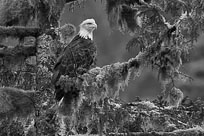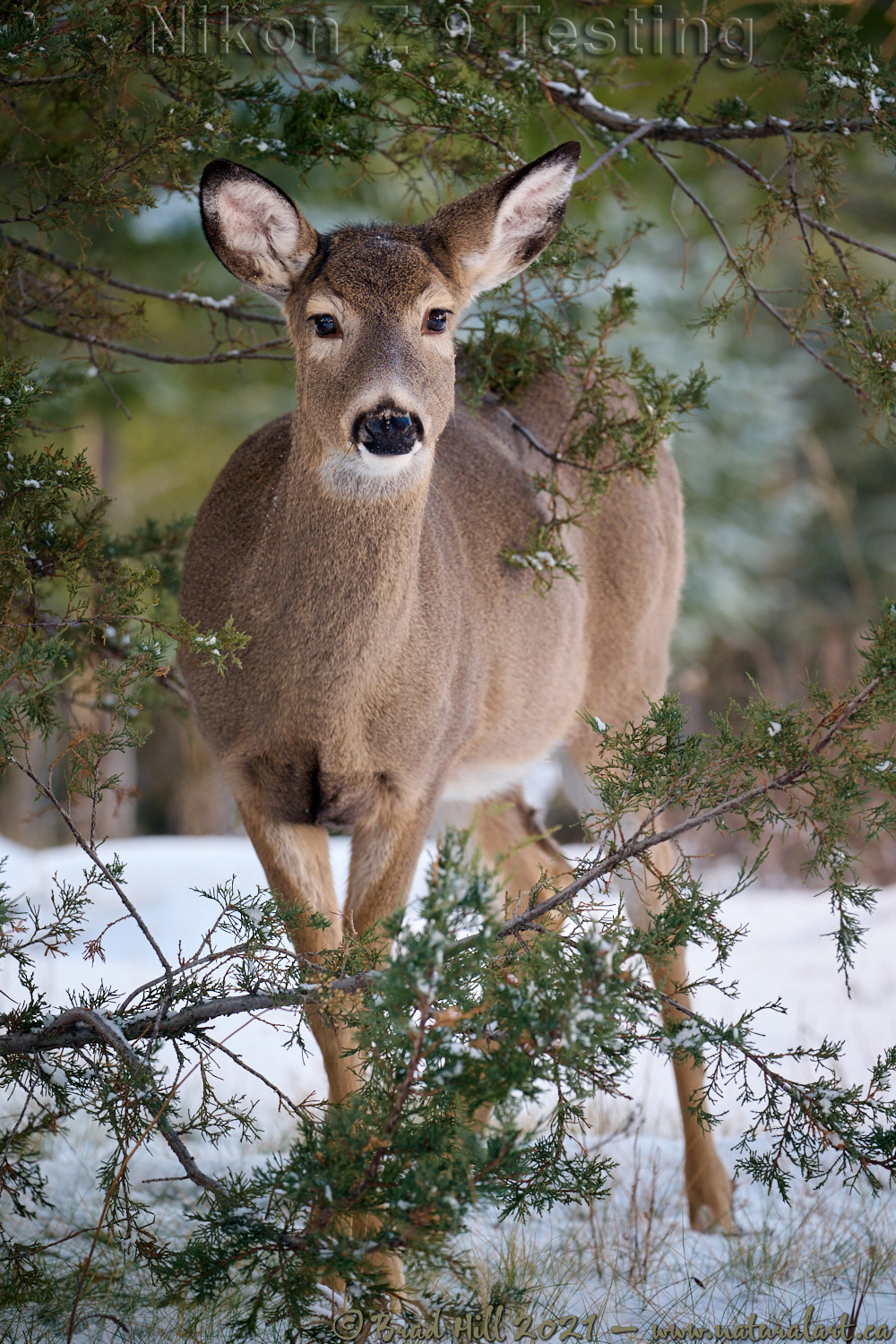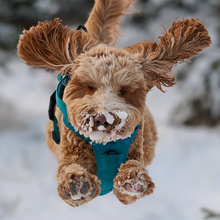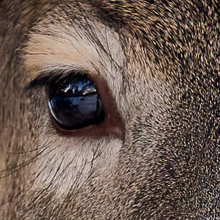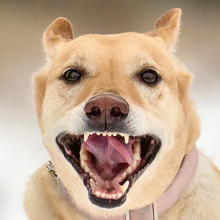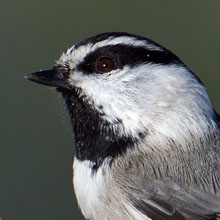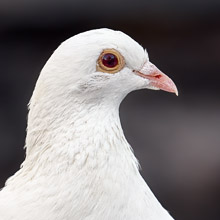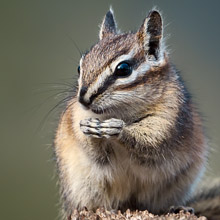Availability: Undetermined - Enquiries?
In the Field
Z 9 Testing - I'm All Tied Up Right Now. Findlay Creek Region (East Kootenays), British Columbia, Canada. Dec 12, 2021.
This is my second gallery post and commentary conveying my experiences with shooting wildlife and other wild-acting subjects using the Nikon Z 9. In late November of 2021 Nikon was generous enough to send me a late-production Nikon Z 9 and a production version of the Nikkor 100-400mm f4.5-5.6S lens for testing purposes. They put no constraints on what I did with the camera or what I said about it.
I captured this shot of a female White-tailed Deer using a Z 9 and Nikkor 100-400mm f4.5-5.6S in the first part of December of 2021. There's at least a couple of points about the Z 9 that became apparent when I was shooting this image that are worth discussing here.
First, I was experimenting with the Z 9's 3D-Tracking when I captured this shot. I had Subject Recognition on at the time and I was testing how well the camera picked up and stuck with the eye of this deer. While the deer's eye was "in the open" when I shot this image, for a lot of the session the deer's eye was partially or wholly obscured by juniper branches as it bent down and foraged on grasses. It was quite impressive how the AF would stick to the eye even when branches obscured it and, if the obstruction was total and the eye disappeared, how the focus would then shift to keeping the head in focus (as you could see by the changing size of the focus box in the EVF). While I still will use other AF area modes on the Z 9 in specific situations, my experience when I was shooting this deer helped convince me that my days of using single point focusing as my "default" AF mode were behind me!
Second, because of the effectiveness of the Z 9's focusing system I am finding that I am increasingly "trusting it" to do its job and moving towards thinking about "other things" when I'm working with a subject (like composition, for instance). As a long time single point AF user (or with the D5 and D6 a user of the tight 9-point Dynamic Area focus area mode) and one who liked to compose an image first and then toggle the focus point to where I wanted it, I am finding the 3D-Tracking of the Z 9 exceptionally liberating. It is taking me a while to break my old habits (darned muscle memory, eh?) and become fully comfortable with a totally new way of operating my camera in the field (after all, it is pretty much a paradigm shift!)...but I'm getting there! In the case of this shot I found I could forget about obsessing over my focus point position and instead concentrate on making sure I didn't clip the deer's hooves at the bottom of this tightly framed shot.
With the way technology is moving these days it's a fun time to be a wildlife photographer...and I find myself thinking about all the new types of images I'll be able to capture with the Z 9.
Here's a larger version (4800 pixel) of this attractive White-tail for your perusal:
• I'm All Tied Up Right Now: Download 4800 pixel image (JPEG: 5.9 MB)
ADDITIONAL NOTES:
1. This image - in all resolutions - is protected by copyright. I'm fine with personal uses of them (including use as desktop backgrounds or screensavers on your own computer), but unauthorized commercial use of the image is prohibited by law. Thanks in advance for respecting my copyright!
2. Like all photographs on this website, this image was captured following the strict ethical guidelines described in The Wildlife FIRST! Principles of Photographer Conduct. I encourage all wildlife photographers to always put the welfare of their subjects above the value of their photographs.
Behind the Camera
Z 9 Testing - I'm All Tied Up Right Now. Findlay Creek Region (East Kootenays), British Columbia, Canada. Dec 12, 2021.
Lossless compressed RAW (NEF); ISO 720.
Nikon Z 9 with Nikkor 100-400mm f4.5-5.6S @ 230mm. Hand-held. VR on in Sport mode. 3D-Tracking area AF area mode with subject recognition on (in Auto mode).
1/250s @ f5.6; no compensation from matrix-metered exposure setting.
At the Computer
Z 9 Testing - I'm All Tied Up Right Now. Findlay Creek Region (East Kootenays), British Columbia, Canada. Dec 12, 2021.
RAW Conversion to 16-bit PSD file (and JPEG files for web use), including all global and selective adjustments, using Phase One's Capture One Pro 22. Global adjustments on this image were limited to tweaks to the brightness (mid-tone exposure) and highlights. Selective local adjustments performed using Capture One Pro's layers and masking tools. In this case selective adjustments were made on 3 separate layers and included one or more tweaks to brightness, clarity (mid-tone contrast) and color saturation.
Photoshop modifications were limited to the insertion of the watermark and/or text.
Conservation
Z 9 Testing - I'm All Tied Up Right Now. Findlay Creek Region (East Kootenays), British Columbia, Canada. Dec 12, 2021.
Species Status in Canada*: This species is not designated as at risk.
White-tailed Deer (Odocoileus virginianus) are one of the most widely distributed mammals in North America - they can be found in virtually all of southern Canada and in most of the American states. While whitetails are common now, in the late 1800's they were in serious risk of extinction - their populations had been reduced from about 40 million (across North America) to under 500,000. The conservation effort to return whitetails to numbers sufficient for long-term survival was massive and included strict harvest regulations, intense management, reintroductions, and habitat protection. Today, most populations in the United States do not represent original stock and the distinction of most historical subspecies is uncertain.
Whitetails resemble Mule Deer quite closely, and the two species overlap in distribution in western North America. The two species tend to prefer different habitats, with whitetails occupying more heavily forested land and along river valley bottoms, while muleys tend to prefer uplands and montane areas. On rare occasions, the two species will interbreed. Occasionally the offspring are fertile, but in most cases they are sterile.
This whitetail fawn was photographed in the Columbia Valley of the East Kootenays. While this species is not currently considered at risk, many ecosystems within the Columbia Valley face development pressure, including pressure from logging operations.
*as determined by COSEWIC: The Committee on the Status of Endangered Wildlife in Canada










